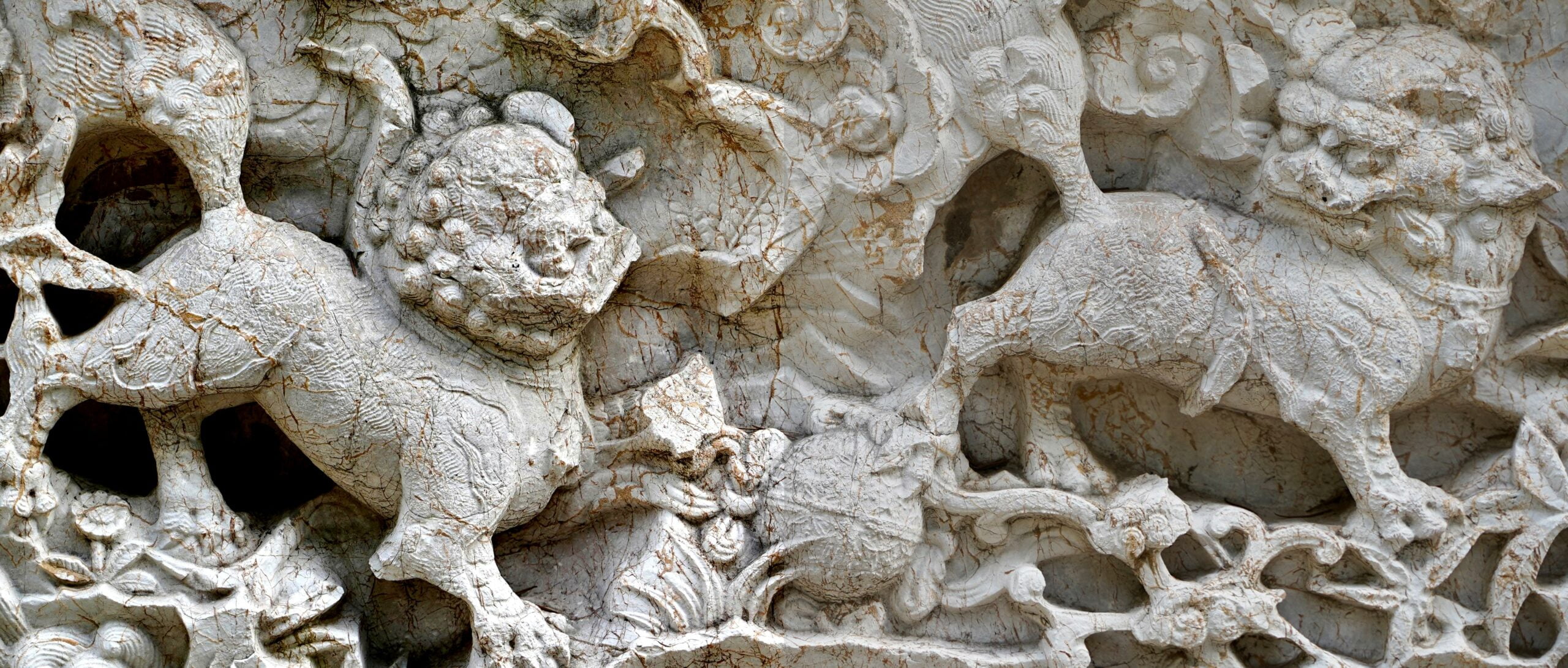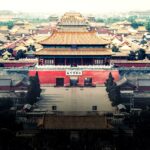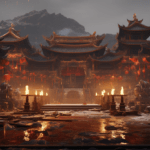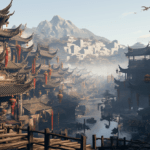The Han Dynasty’s golden age and stable government have long fascinated historians and enthusiasts of ancient Asian civilizations. Delving into the political structure, administrative systems, and societal dynamics of this remarkable era, we uncover a wealth of insights into the enduring stability that characterized the governance of the Han Dynasty. As we embark on this journey, we will explore the factors behind this unique period of prosperity and shed light on the hidden intricacies that made the Han Dynasty’s golden age truly extraordinary. Join us as we unravel the mysteries of one of the most fascinating chapters in Chinese history.
Han Dynasty: A Golden Age of Stable Government
The Han Dynasty, often hailed as a “golden age” in Chinese history, provides a fascinating glimpse into a remarkable government that achieved enduring stability. At the heart of this stable government was the reign of Emperors Wen and Jing, who navigated the challenges of their time with political astuteness and cultural advancements that shaped the dynasty’s legacy.
Under the Han Dynasty, political stability was not just a mere façade. It was a product of the rulers’ strong governance, which prevented the collapse of the dynasty during the Rebellion of the Seven States. The pivotal role played by Emperors Wen and Jing in maintaining stability cannot be overstated. Their steady leadership and ability to foster social harmony allowed the dynasty to flourish for over four centuries, from 206 BCE to 220 CE.
What set the Han Dynasty apart was its robust administrative system, which effectively managed the vastness of the empire. Combining a mix of feudal and central bureaucracy, the government successfully governed its territories and maintained control over its subjects. The power and rank of government officials were even determined by their annual salary, ensuring a meritocratic system that rewarded competence and loyalty.
To comprehend the stability of the Han Dynasty, one must understand its hierarchical political divisions. Provinces, commanderies, and counties formed the backbone of the imperial administration, providing a well-structured framework for governance. This division of power allowed for local autonomy while maintaining imperial control. It also facilitated efficient communication and decision-making—a crucial factor in maintaining stability and upholding the rule of law.
As with any prosperous civilization, a strong military was essential to safeguard the empire’s borders and maintain internal security. The Han Dynasty had a formidable army that conscripted soldiers and militias from the population. This military strength ensured the dynasty’s continued existence and deterred potential aggressors. The combination of a well-organized government and a capable military contributed significantly to the lasting stability of the Han Dynasty.
The Han Dynasty’s enduring stability was not merely confined to its political structure—it permeated various aspects of society and culture. Social equality was a hallmark of this golden age; the dynasty emphasized meritocracy, enabling individuals from different backgrounds to rise through the ranks of government. This fostered a greater sense of inclusivity and societal harmony, laying the foundation for long-term stability.
Moreover, the cultural achievements of the Han Dynasty were remarkable. This era witnessed significant advancements in various fields, such as art, literature, technology, and economic growth. The flourishing of arts and literature not only enriched people’s lives but also promoted a sense of national identity and unity. Through their expertise and patronage, the emperors cultivated an environment conducive to innovation and creativity.
In essence, the remarkable stability of the Han Dynasty’s golden age can be attributed to the astute governance of Emperors Wen and Jing, the robust administrative systems, effective military strategies, and social harmony. This extraordinary dynasty left an indelible mark on Chinese history, shaping the governance and cultural landscape that endures to this day. As we delve deeper into the history of the Han Dynasty, the enduring stability it achieved continues to captivate and inspire us, providing valuable lessons for governance in any age.
“The Han Dynasty’s golden age, with its stable government and remarkable achievements, stands as a testament to the enduring strength of good governance.”
The Han Dynasty is often regarded as a golden age in Chinese history, characterized by great advancements and prosperity. To learn more about this remarkable era, click here: han dynasty golden age. Delve into the fascinating achievements and cultural developments of this period, from innovative agricultural techniques to groundbreaking administrative reforms. Uncover the intriguing stories of influential emperors and exceptional intellectuals who shaped the Han Dynasty’s legacy. Don’t miss out on this opportunity to explore one of the most captivating chapters in ancient Chinese civilization.
China, the first modern state, had a centralized government and a corps of bureaucrats that lasted from 150 BCE to 1911. Chinese history is conveniently divided into periods called dynasties, ruled by emperors from continuous ruling families. However, there were exceptions, such as Empress Dowagers and Empress Wu, who founded her own dynasty. Dynasties ended either due to a lack of male heirs or as a result of rebellions or wars.
[youtube v=”ylWORyToTo4″]
The concept of the Mandate of Heaven, originating from the Zhou dynasty, played a significant role in Chinese history. Historians believe that it was introduced to justify the overthrow of the Shang dynasty. According to this concept, the ruling family of a dynasty loses the mandate if they behave improperly. This divine intervention explains the cycle of dynasties falling and being replaced by new ones over three thousand years. While this idea cannot be disproven, it provides a moral framework that aligns with the teachings of Confucianism.
Confucius, a minor official during the Warring States period, developed a political and philosophical system aimed at creating stability. He believed that following the example of sage emperors and upholding moral behavior was essential for a strong and peaceful state. Confucius emphasized hierarchical relationships and the importance of filial piety, particularly the relationship between father and son. The goal was for everyone to strive to be a superior person, which would lead to a well-functioning society.
Ren and Li are two complex concepts in Confucianism. Ren refers to propriety and proper behavior in every situation, depending on the person you are interacting with. Li refers to rituals associated with Chinese religion, often involving the veneration of ancestors.
Early Chinese historians were trained in Confucian classics, where they learned the importance of behaving properly to maintain the Mandate of Heaven. The way they wrote history emphasized the moral aspect and attributed the rise and fall of dynasties to the actions and behavior of the emperor. If the emperor behaved properly, disasters like storms, floods, and peasant uprisings would not occur. This moralistic explanation of historical causation elevated the role of Confucian scholars and promoted a vision of moral behavior that aligned with Confucian principles.
FAQ
Q: What is the Han Dynasty?
A: The Han Dynasty was a golden age in Chinese history that lasted from 206 BCE to 220 CE. It was known for its stability, cultural advances, political structure, and administrative systems.
Q: Who were the emperors of the Han Dynasty’s golden age?
A: The emperors of the Han Dynasty’s golden age were Emperor Wen and Emperor Jing. They are particularly noted for their stability and cultural advancements.
Q: How did the stability of Emperor Wen and Emperor Jing contribute to the Han Dynasty’s endurance?
A: The stability and strength of Emperor Wen and Emperor Jing prevented the fall of the Han Dynasty during the Rebellion of the Seven States, ensuring its endurance and continuation.
Q: What were the main achievements of the Han Dynasty’s governance?
A: The Han Dynasty’s governance was characterized by political stability, social harmony, territorial expansion, cultural influence, technological advancements, economic growth, artistic and literary achievements, and social equality.
Q: How was the government structured during the Han Dynasty?
A: The Han Dynasty had a mix of feudalism and central bureaucracy led by the emperor. Government officials’ power and rank were determined by their annual salary, and the government was divided into hierarchical political divisions, including provinces, commanderies, and counties.
- Jesus Bible: Discover Jesus’s Story Throughout Scripture - April 27, 2025
- Don Luis: Unraveling the 16th-Century Virginia Mystery - April 27, 2025
- Captain J’s Kauai Tours: Unforgettable Na Pali Coast Adventures - April 27, 2025
















